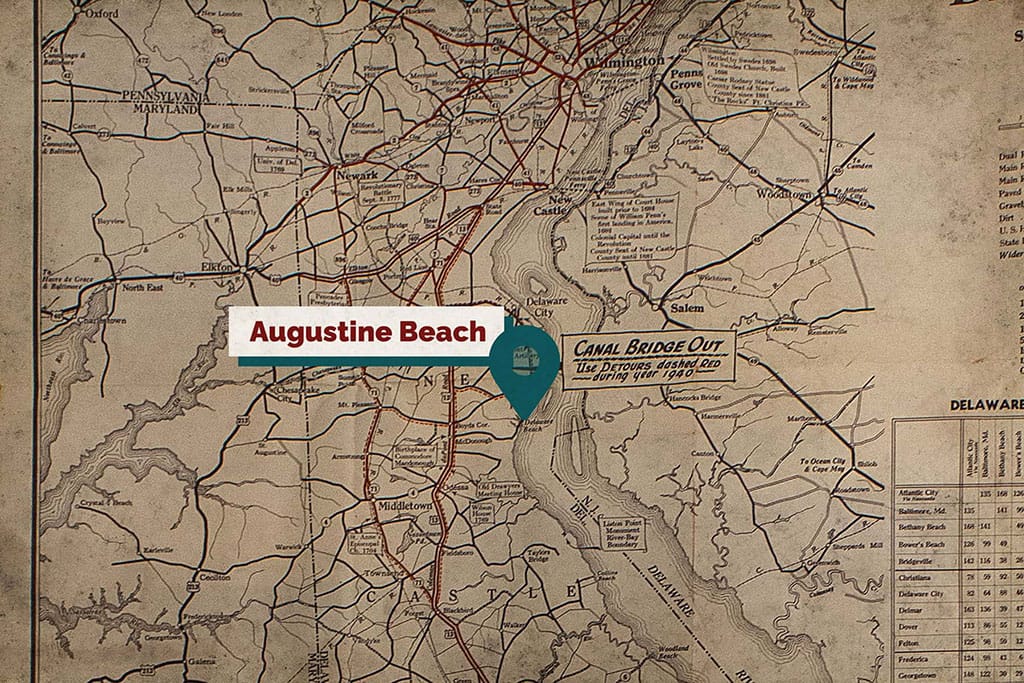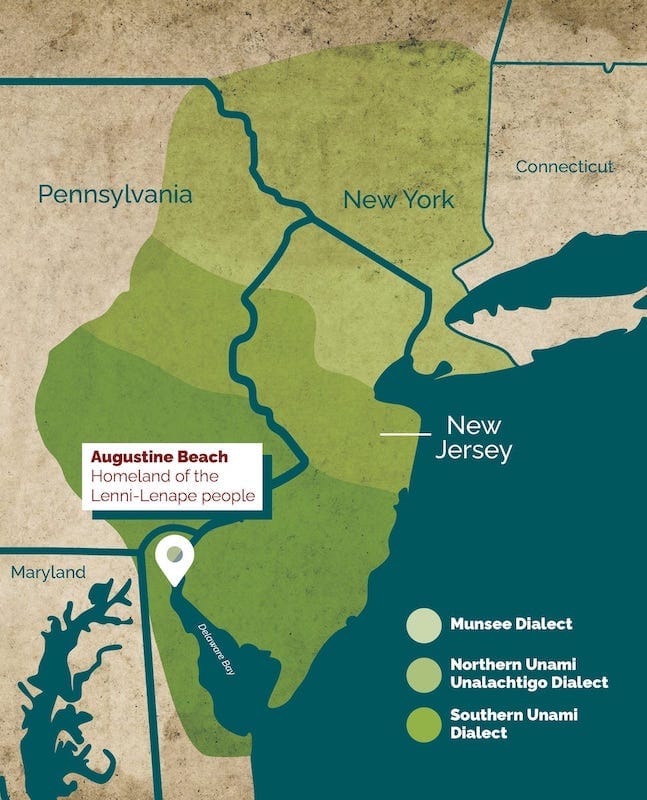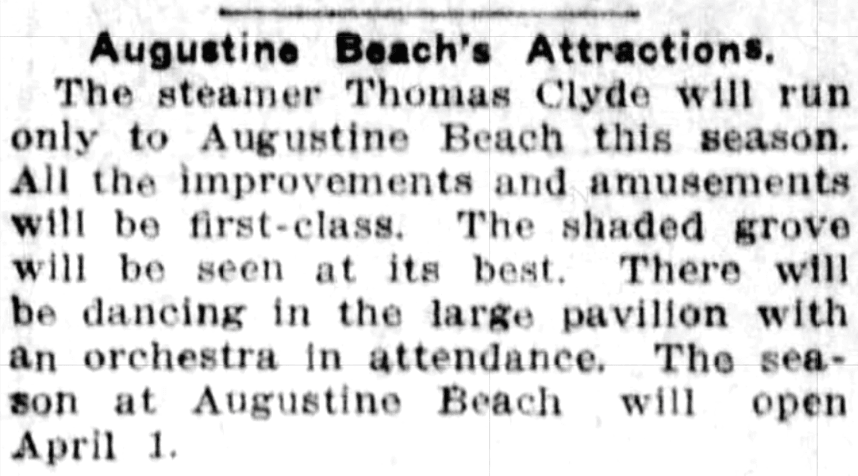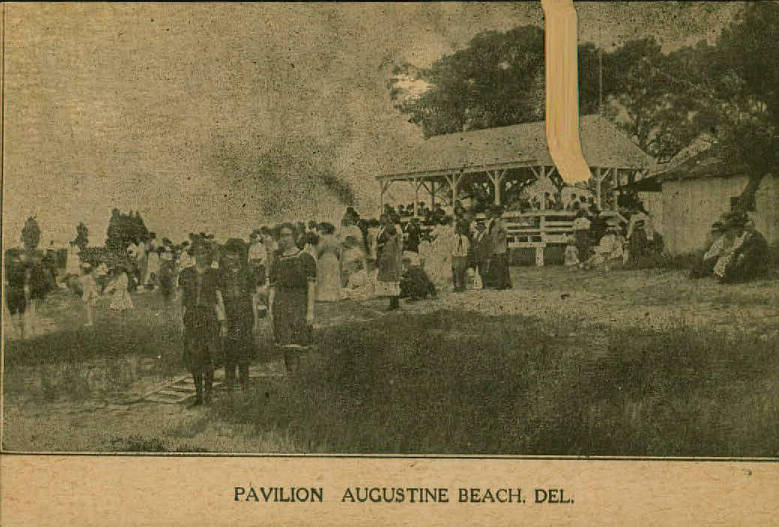During the Jim Crow Era
Augustine Beach

Augustine Beach is located on the ancestral homeland of the Lenni-Lenape people. It is located in northern Delaware along the west bank of the Delaware River, south of the Chesapeake and Delaware Canal, in New Castle County. This land was granted to Augustine Herman, a surveyor who journeyed to Virginia and Maryland, creating a map of the Mid-Atlantic seaboard area for Lord Baltimore of England in the 1660s. For his work, he was granted 30,000 acres of land in Maryland and New Castle, Delaware, including the land of the Lenni-Lenape people.


Augustine Herman’s son, Casparus Herman, acquired the land and named the area after his father. Casparus built a manor house on the site which was later replaced with the Augustine Beach Hotel in 1814. By 1918 the Augustine Beach Hotel was leased by the government and turned into quarters for the United States Army officers connected to the new Port Penn Plant nearby. The structure is now known as the Augustine Inn Seafood and Chop House.
Augustine Beach is considered one of the oldest beach resort areas on the river with the hotel built in the early nineteenth century and a hundred bath houses added in 1867.
In an 1910 Evening Journal announcement of the opening of the beach on April 1st, the Thomas Clyde steamer, out of Philadelphia, Pennsylvania, is scheduled to travel to the beach regularly.


Image: Screenshot of the Evening Journal on April 1, 1910.
The 1910 Evening Journal announcement also mentioned a pavilion for dancing with a large orchestra in attendance. An August 5, 1914 advertisement announces the opening of the beach on July 4th for the season with dancing every Thursday night, first class meals served at the Augustine Beach Hotel, all kinds of treats sold on the grounds, and new sanitary bath houses. The resort’s heyday was between 1870 and 1920.

Augustine Beach does not appear to be a beach frequented by Black people. Most of the newspaper accounts mention white religious associated groups or other organizations visiting their annual events. The exception is a July 15, 1910 announcement in the Evening Journal and Daily Republican that spoke about the gathering of “a large party of colored people” for an excursion to Augustine Beach in Delaware. This 1910 excursion began with a boat trip aboard the steamer Adelaide, based out of Philadelphia, Pennsylvania.
At this time we know little else about Augustine Beach as a destination for Black people in the early twentieth century, therefore further research and oral histories must be conducted to share this history of Black leisure culture.
Additional Resources
- “Augustine Beach.” Newark Post. (Newark, Del.), 05 Aug 1914. Chronicling America: Historic American Newspapers. Lib. of Congress.
- “Augustine Beach: One of Delaware’s Earliest Resorts,” 24 Oct 2020, Delmarva Back Roads, (Accessed August 12, 2021).
- Dixon, Mark E., “The Stories of Five Famous Resorts of Yesteryear,” Delaware Today, 2017 Aug 15, (Accessed August 12, 2021).
- Kahrl, Andrew. The Land Was Ours: How Black Beaches Became White Wealth in the Coastal South. Chapel Hill: University of North Carolina Press, 2012.
- “Port Penn Having a Big Boom as Munition Center.” Smyrna Times. (Smyrna, Del.), 30 Oct 1918, Chronicling America: Historic American Newspapers. Lib. of Congress.


